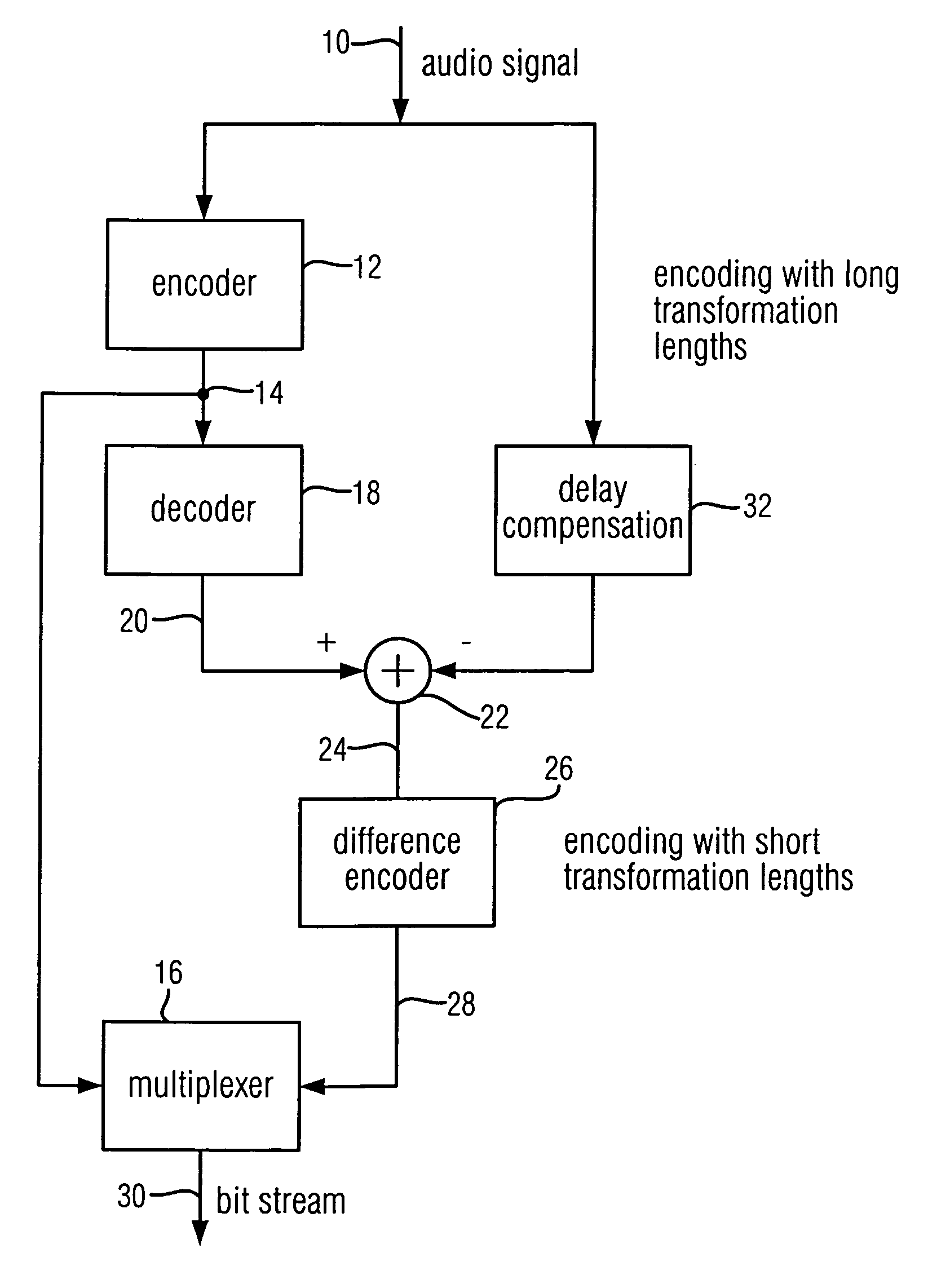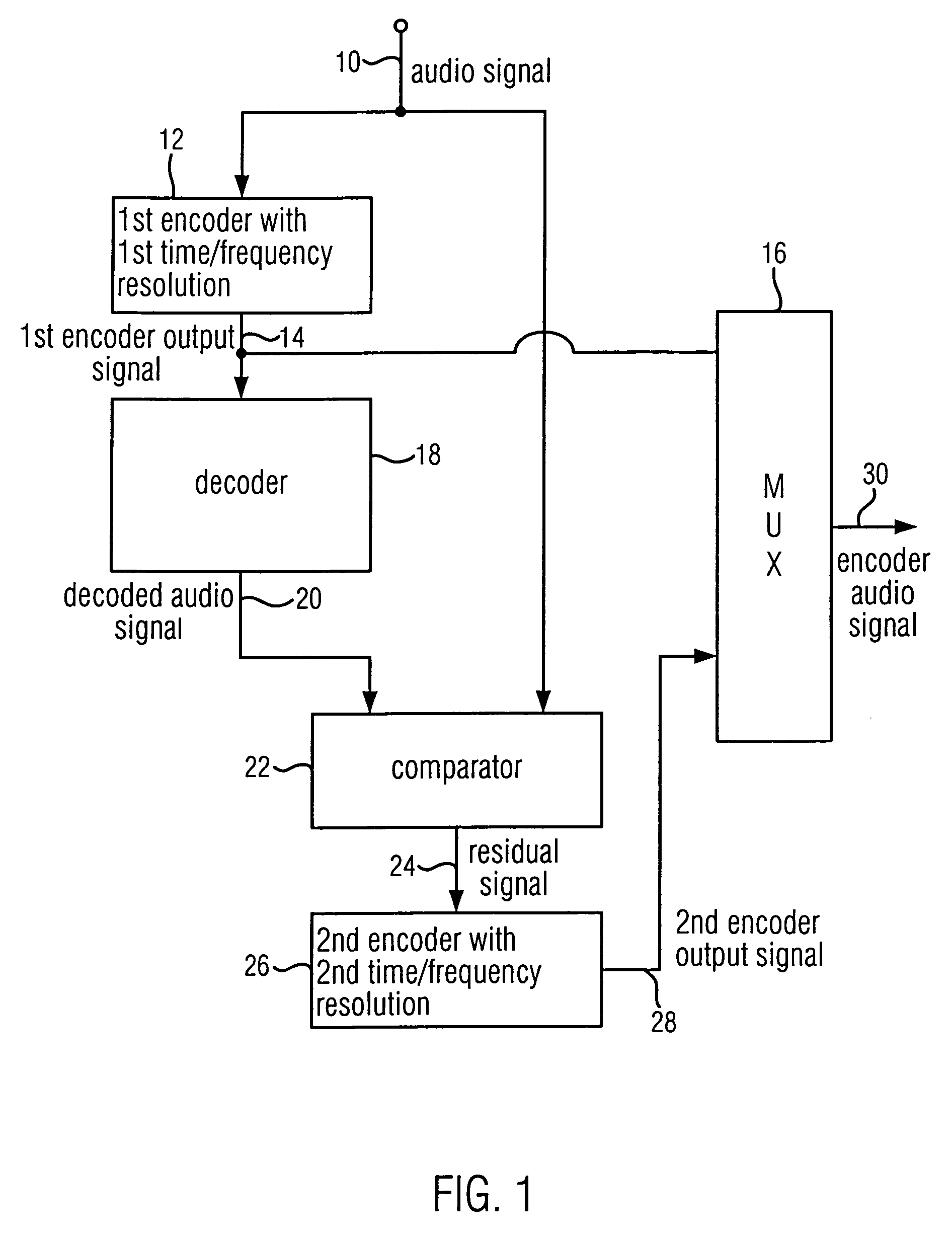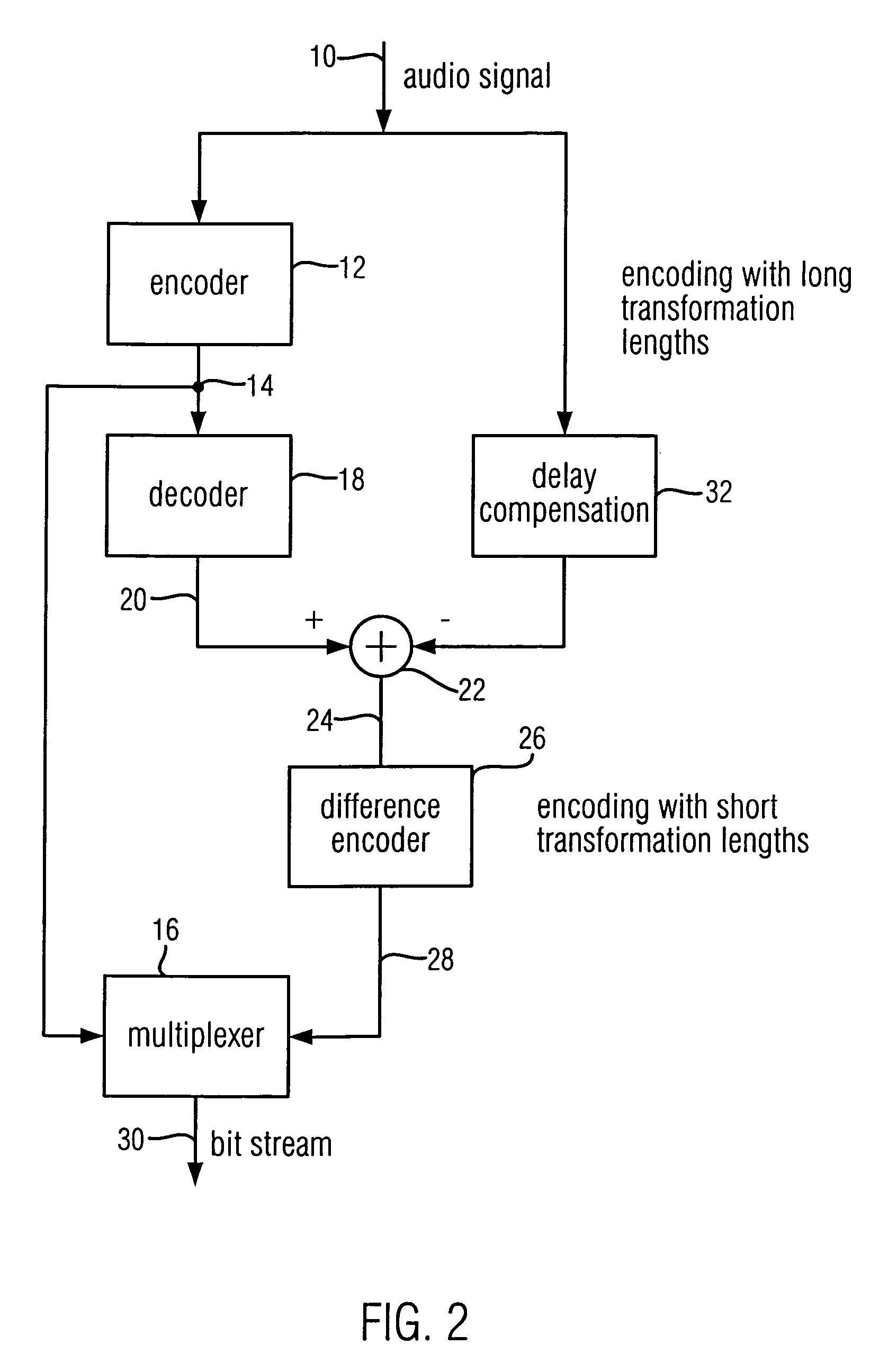Apparatus and method for encoding an audio signal and apparatus and method for decoding an encoded audio signal
a technology of encoder and audio signal, applied in the field of encoder methods, can solve the problems of only being considered stationary for very short time periods, affecting the frequency solution, etc., and achieve the effects of improving the quality of the first encoder method, good time resolution, and well and efficiently captured
- Summary
- Abstract
- Description
- Claims
- Application Information
AI Technical Summary
Benefits of technology
Problems solved by technology
Method used
Image
Examples
Embodiment Construction
[0033]FIG. 1 shows an apparatus for encoding an audio signal, which is provided via input 10. First, the audio signal is fed into a first encoder 12 with a first time / frequency resolution. The first encoder 12 is formed to generate a first encoder output signal at an output 14. The first encoder output signal at output 14 of the first encoder 12 will be supplied, on the one hand, to a multiplexer 16, and, on the other hand, to a decoder 18, which is adapted to the first encoder and decodes the first encoder output signal to provide a decoded audio signal at an output 20 of the decoder 18. The decoded output signal 20 as well as the original audio signal 10 is supplied to a comparator 22. The comparator 22 is formed to compare the audio signal at the input 10 to the decoded audio signal at the output 20, which means after the path from the first encoder 12 and decoder 18. The comparator 22 is particularly formed to provide a residual signal at one of its outputs 24, wherein the resid...
PUM
 Login to View More
Login to View More Abstract
Description
Claims
Application Information
 Login to View More
Login to View More - R&D
- Intellectual Property
- Life Sciences
- Materials
- Tech Scout
- Unparalleled Data Quality
- Higher Quality Content
- 60% Fewer Hallucinations
Browse by: Latest US Patents, China's latest patents, Technical Efficacy Thesaurus, Application Domain, Technology Topic, Popular Technical Reports.
© 2025 PatSnap. All rights reserved.Legal|Privacy policy|Modern Slavery Act Transparency Statement|Sitemap|About US| Contact US: help@patsnap.com



